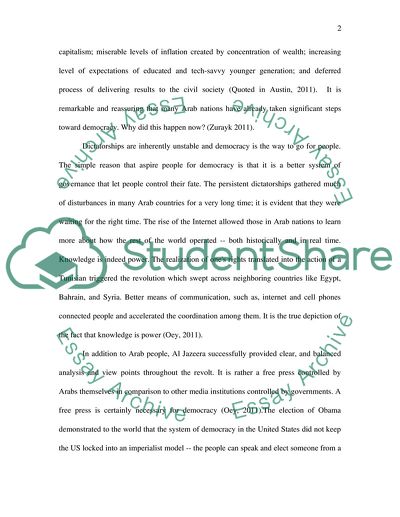Cite this document
(“Specific Causes of the Arab Spring Research Paper”, n.d.)
Specific Causes of the Arab Spring Research Paper. Retrieved from https://studentshare.org/politics/1756211-specific-causes-of-the-arab-spring-specifically-socioeconomics
Specific Causes of the Arab Spring Research Paper. Retrieved from https://studentshare.org/politics/1756211-specific-causes-of-the-arab-spring-specifically-socioeconomics
(Specific Causes of the Arab Spring Research Paper)
Specific Causes of the Arab Spring Research Paper. https://studentshare.org/politics/1756211-specific-causes-of-the-arab-spring-specifically-socioeconomics.
Specific Causes of the Arab Spring Research Paper. https://studentshare.org/politics/1756211-specific-causes-of-the-arab-spring-specifically-socioeconomics.
“Specific Causes of the Arab Spring Research Paper”, n.d. https://studentshare.org/politics/1756211-specific-causes-of-the-arab-spring-specifically-socioeconomics.


